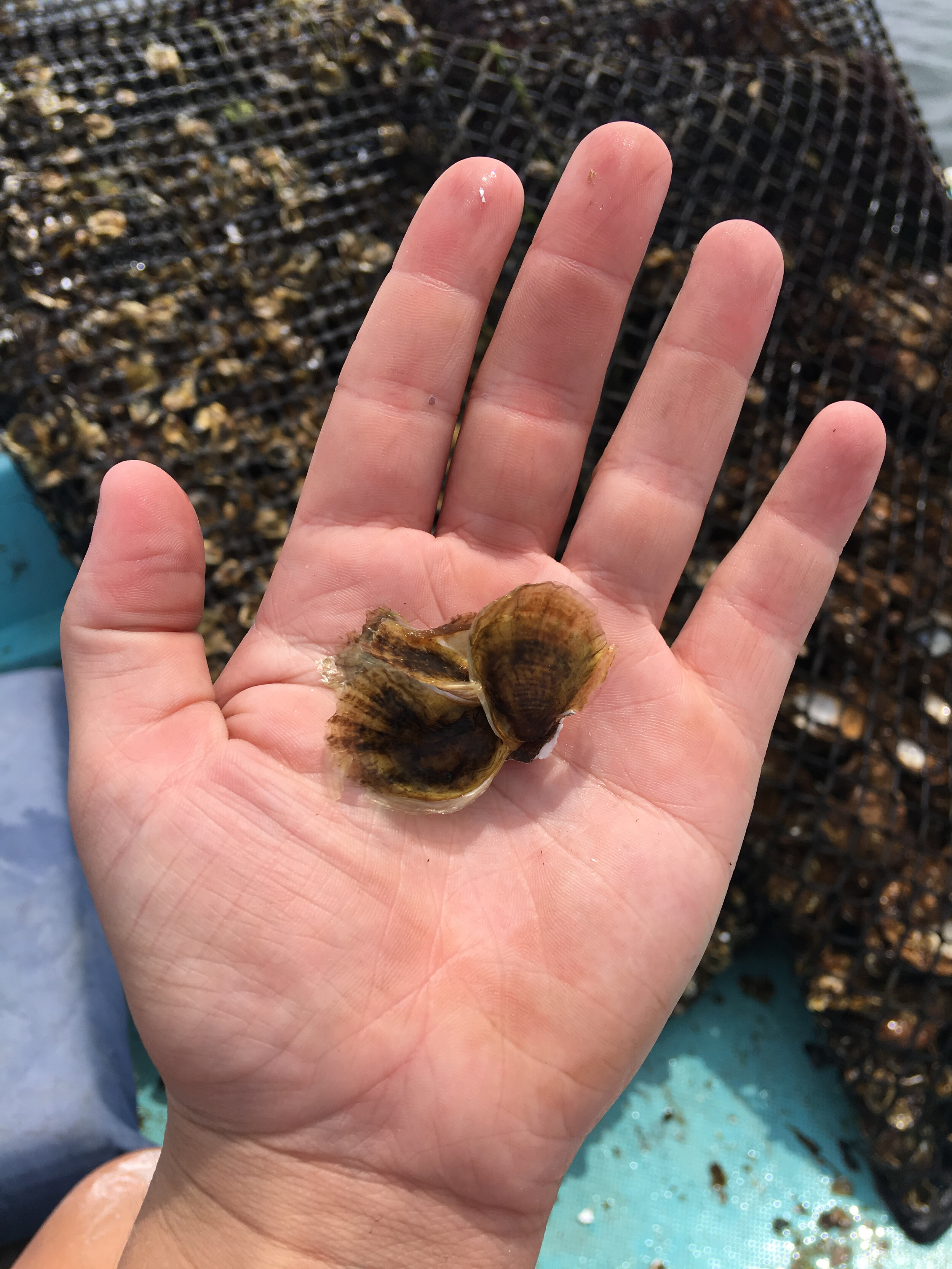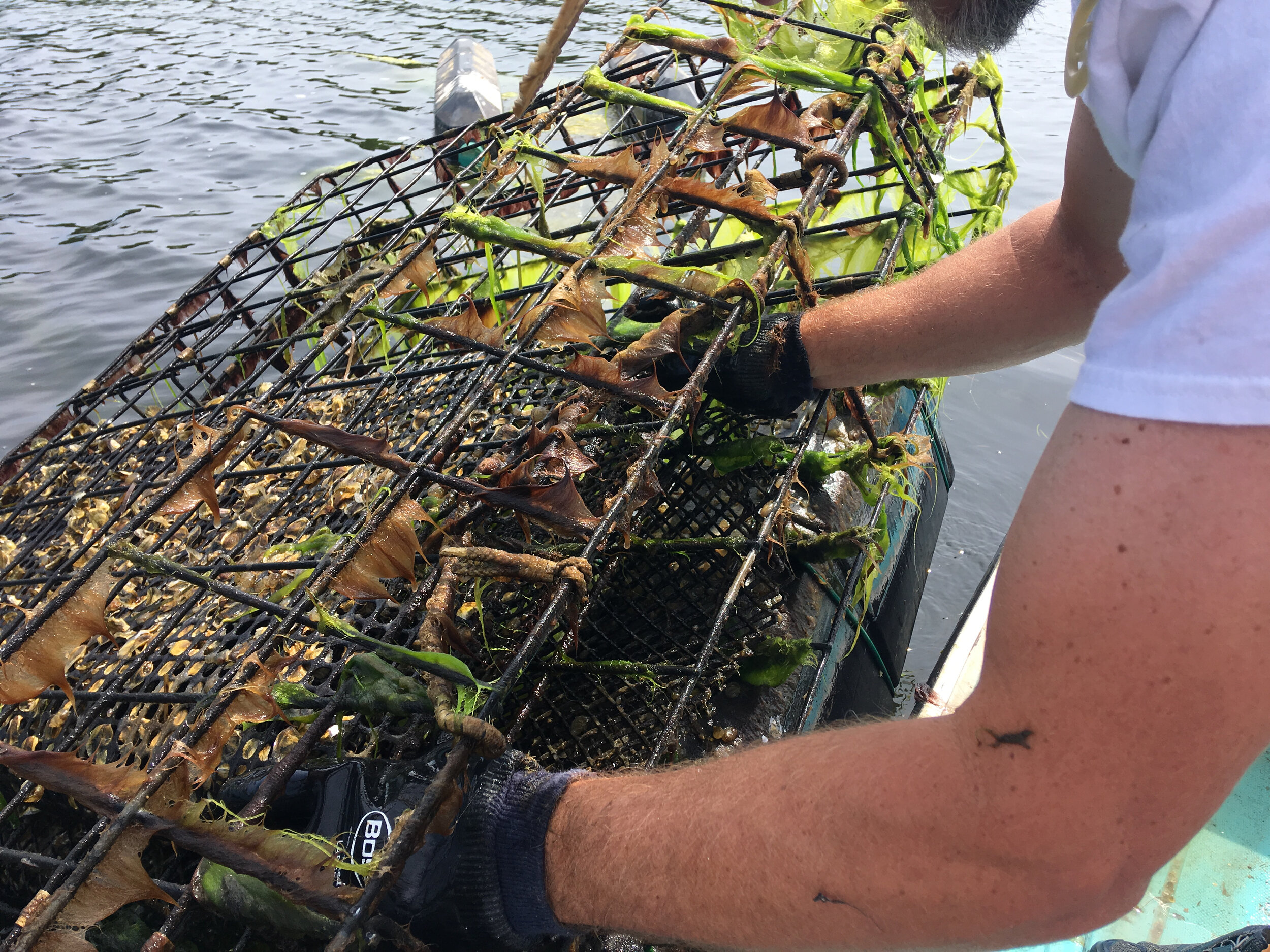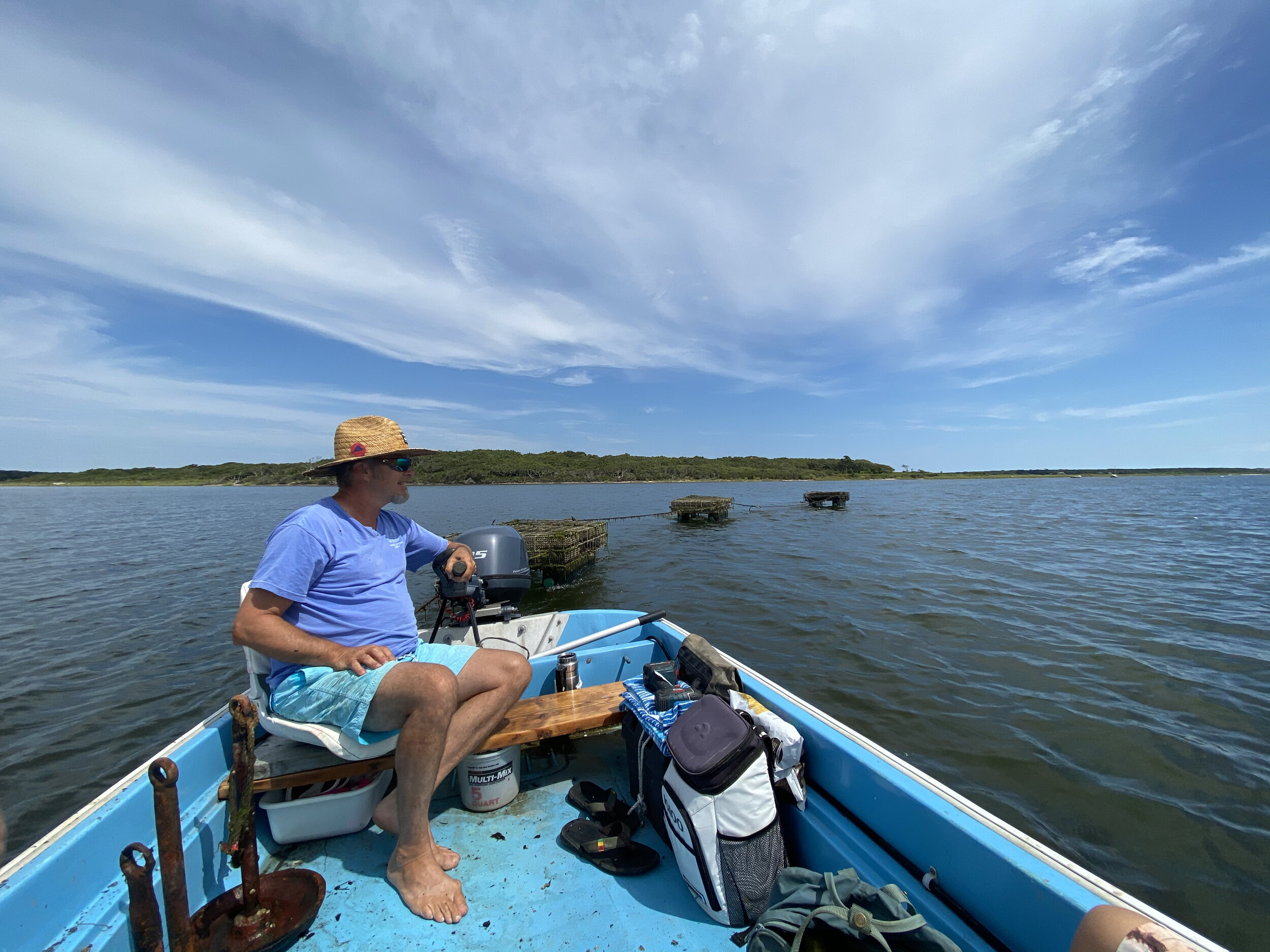a fish tote full of spat-on-shell ready to be planted out
Oyster Restoration in the Great Ponds
Wild oyster populations in Tisbury and Edgartown Great Ponds have been vital to the health of the ponds and the sustenance of its community since early tribal times. In 1996, the oyster population in Edgartown Great Pond suffered a massive die off, which was later identified as the first recorded occurrence of Perkinsus marinus, a single cell parasite-causing Dermo disease in wild oyster populations from Maine through Texas. For years, the population struggled to recover while infection levels remained high.
In 2007, after 10 years of selective pressure from Dermo disease, the Martha’s Vineyard Shellfish Group initiated an oyster restoration program for the ponds aimed at increasing the number of individuals in the pond beyond the threshold where the population can sustain itself. Every season since then, large oysters, which have survived years of infection to Dermo and are suspected more tolerant to it, are selected to be the parents of hatchery reared larvae, spat-on-shell seed and single oysters produced by MVSG to enhance the wild population. Other strategies such as predator control or shell-cultching are also implemented to help the population recover.
Today, MVSG’s oyster restoration program has continued to have remote-set tanks on both Edgartown Great Pond and Tisbury Great Pond every summer. With large help from the MVSG Shell Recovery Partnership, the shells from shellfish you eat at island restaurants are given new life as they’re used to 1) make shell bags to hold spat-on-shell seed and 2) enhance oyster habitat as we push the shell cultch back into the ponds. You can read more about the Shell Recovery Partnership and the benefits of shell cultching under the Shell Recovery Partnership page.











